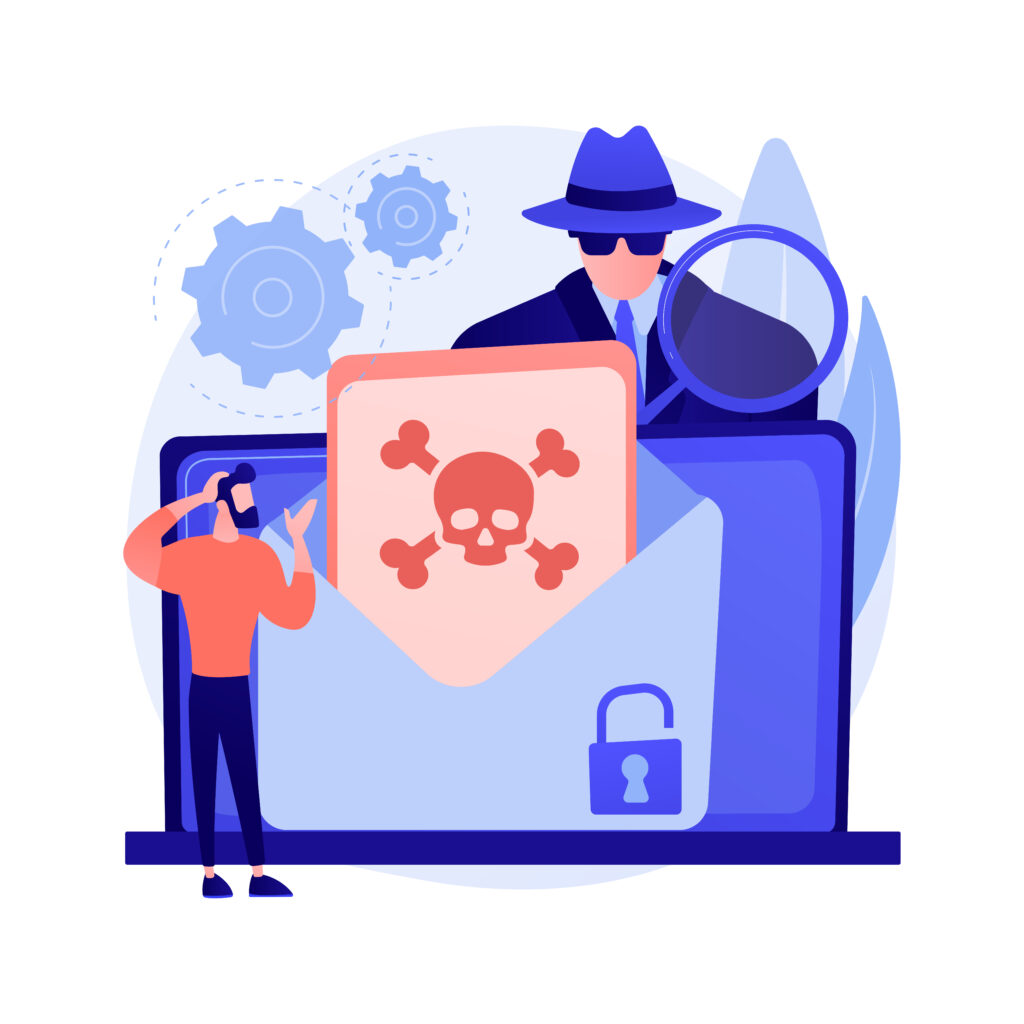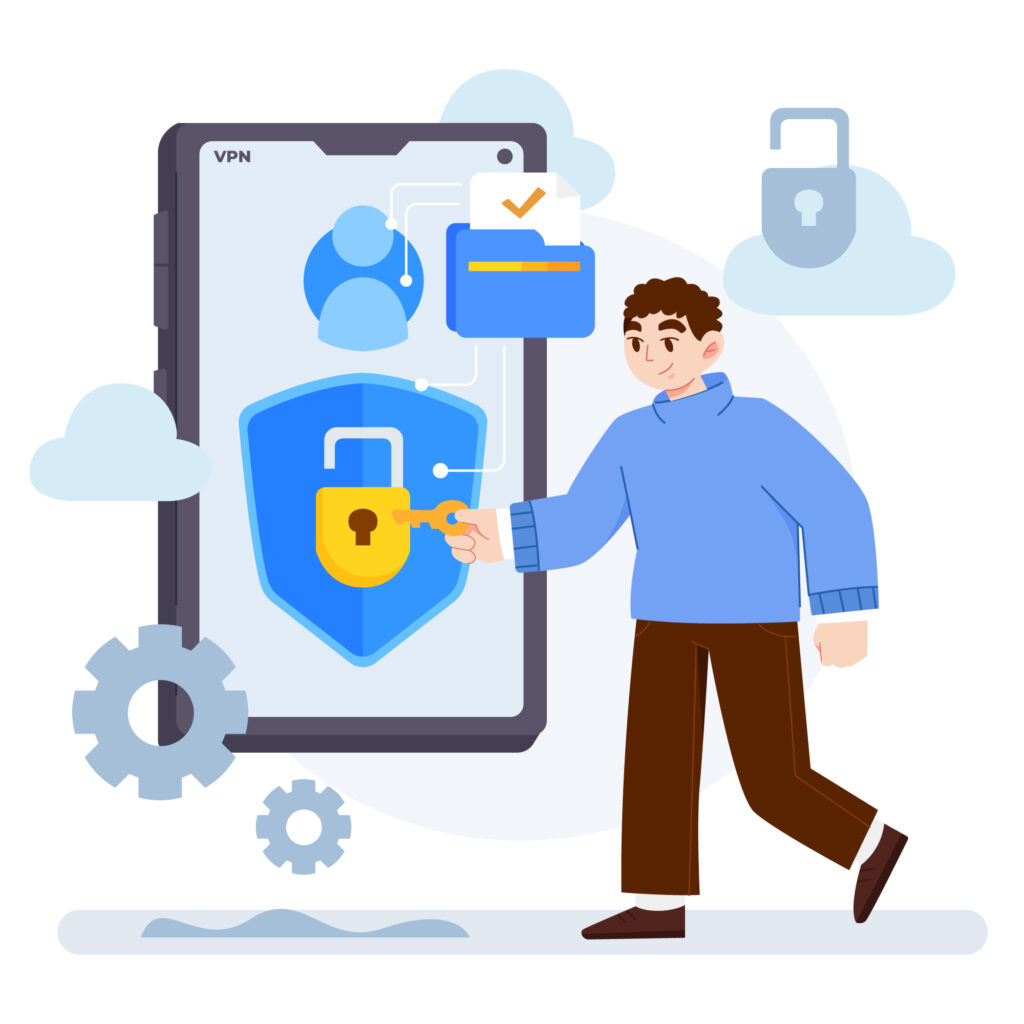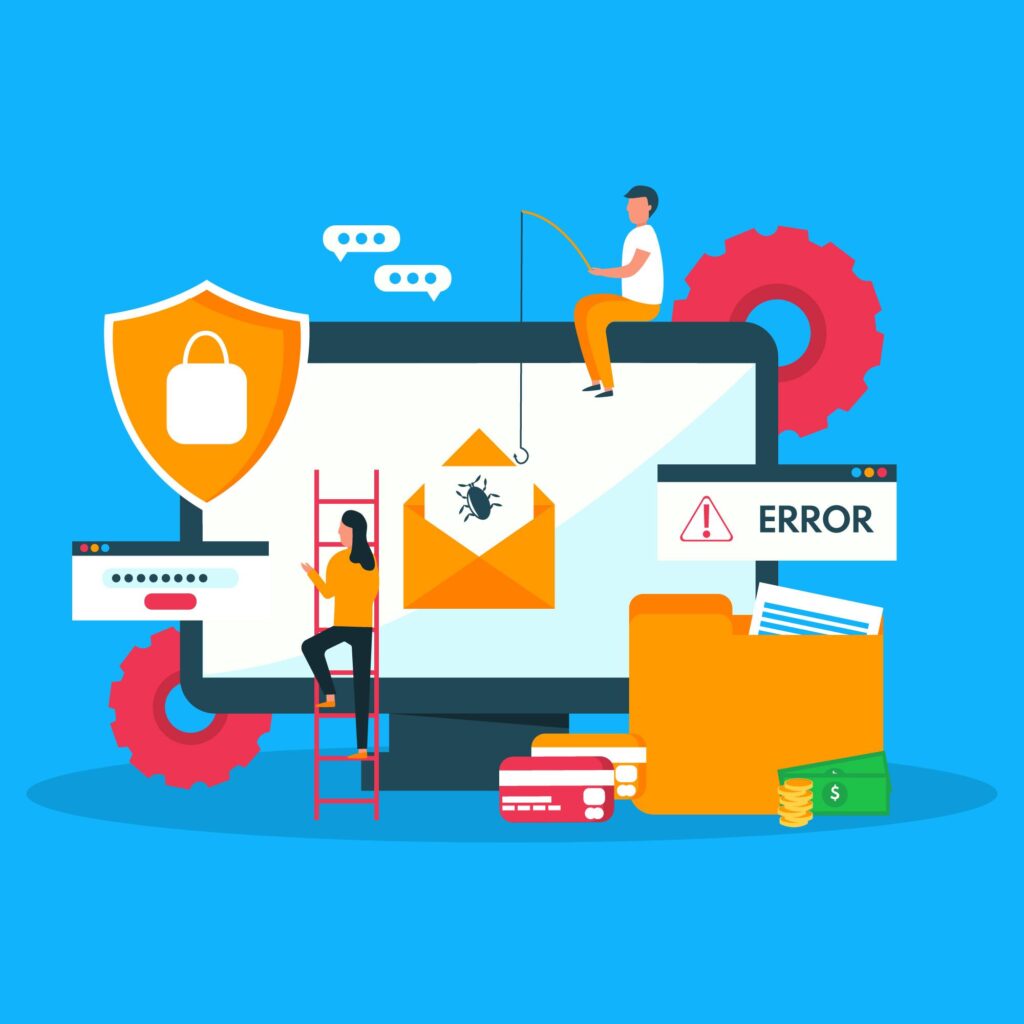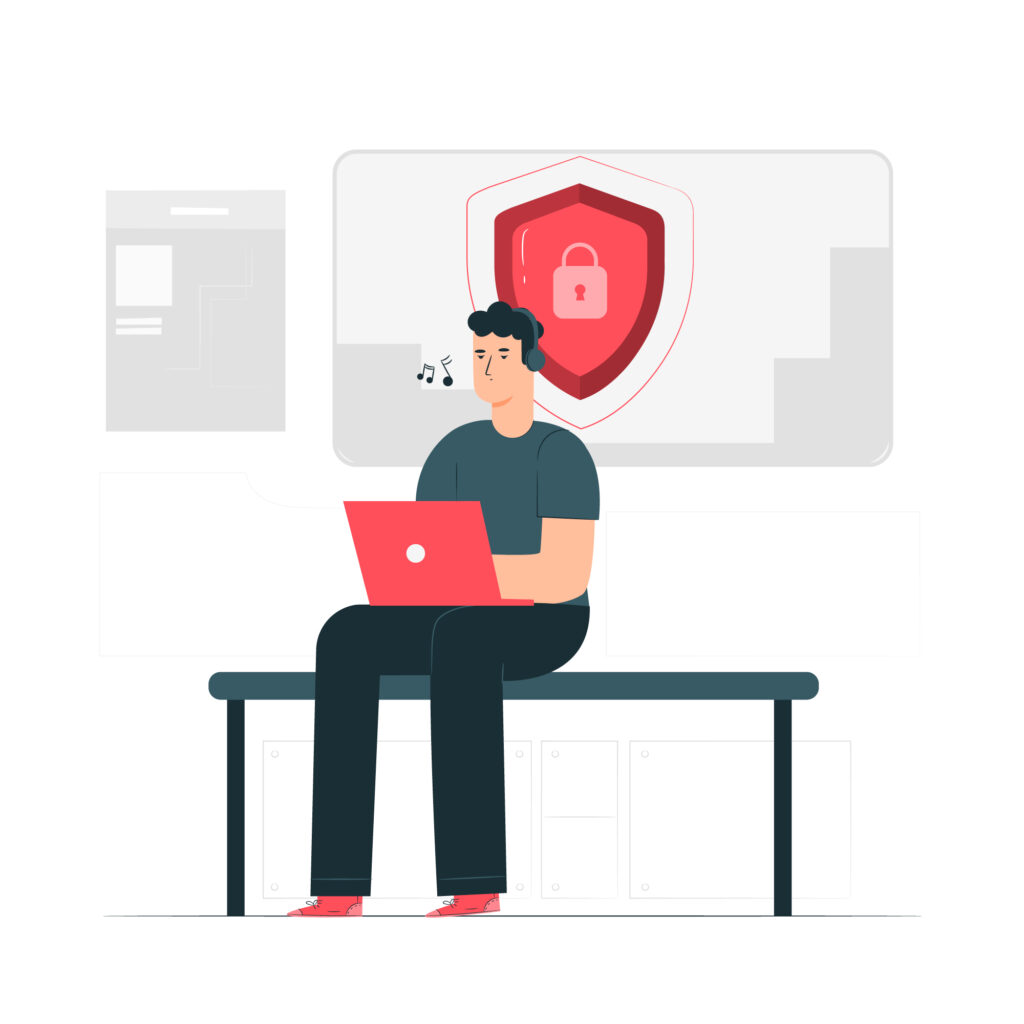 By: John Abhilash / July 19, 2024
By: John Abhilash / July 19, 2024
In today’s digital landscape, data loss can spell disaster for any organization. Whether it’s customer information, financial records, or intellectual property, protecting sensitive data is crucial. This guide will provide you with practical insights, tools, and actionable tips to implement an effective Data Loss Prevention (DLP) strategy.
Understanding Data Loss Prevention:
Data Loss Prevention is a set of tools and processes designed to detect and prevent unauthorized use, transmission, or loss of sensitive data. It’s not just about technology – it’s a comprehensive approach that combines software, policies, and user education.
Key Components of DLP:
Data discovery and classification
Policy enforcement
Monitoring and alerting
Incident response
User training
1.Assessing Your Data Protection Needs:
Before implementing DLP, you need to understand your organization’s specific requirements:
a) Conduct a data inventory:
Use tools like Spirion or Microsoft’s Azure Information Protection scanner to discover and catalog sensitive data across your network.
Identify where your critical data resides (e.g., on-premises servers, cloud storage, employee devices).
b) Classify your data:
Categorize data based on sensitivity (e.g., public, internal, confidential, restricted).
Consider using a classification tool like Titus or Boldon James to automate this process.
c) Identify regulatory requirements:
Determine which regulations apply to your organization (e.g., GDPR, HIPAA, PCI DSS).
Use compliance mapping tools like Compliance Manager in Microsoft 365 to assess your current state.
2.Choosing the Right DLP Tools:
The market offers a wide range of Data Loss Prevention solutions. Here are some top contenders and their strengths:
a) Network DLP:
Forcepoint DLP: Excellent for large enterprises with complex networks.
Symantec Data Loss Prevention: Strong in both on-premises and cloud environments.
b) Endpoint DLP:
McAfee Total Protection for DLP: Good for organizations with a large number of remote workers.
Digital Guardian Endpoint DLP: Offers strong data discovery and classification capabilities.
c) Cloud DLP:
Microsoft 365 DLP: Seamless integration with Microsoft environments.
Google Cloud DLP: Ideal for organizations heavily invested in Google’s ecosystem.
d) Integrated DLP:
Cisco Secure DLP: Integrates well with existing Cisco security infrastructure.
Palo Alto Networks Enterprise DLP: Strong option for organizations using Palo Alto’s next-gen firewalls.
Tips for Selection:
Consider your existing security infrastructure and choose a solution that integrates well.
Look for solutions with strong machine learning capabilities to reduce false positives.
Ensure the tool offers robust reporting features for compliance and auditing.
3.Implementing DLP: A Step-by-Step Guide
Implementing a Data Loss Prevention strategy can seem daunting, but breaking it down into manageable steps makes the process more approachable. This step-by-step guide will walk you through the key stages of DLP implementation, from policy definition to user education.
Step 1: Define Your DLP Policies
Identify what constitutes sensitive data in your organization.
Determine acceptable use policies for different data types.
Define actions to be taken when violations occur.
Example Policy: “Credit card numbers must not be sent via email. Any detected attempt will be blocked and logged.”
Step 2: Configure Your DLP Solution
Set up data discovery scans to locate sensitive information.
Create rules based on your defined policies.
Configure alerting mechanisms for policy violations.
Tip: Start with a small set of critical policies and gradually expand to avoid overwhelming your team with alerts.
Step 3: Test Your DLP Implementation
Conduct controlled tests to ensure policies are working as intended.
Use a tool like GRC’s Data Loss Prevention Test Files to simulate various data loss scenarios.
Step 4: Monitor and Fine-tune
Regularly review DLP logs and alerts.
Adjust policies based on false positives and changing business needs.
Tool Suggestion: Use a SIEM solution like Splunk or ELK Stack to centralize and analyze DLP logs alongside other security data.
Step 5: Educate Users
Develop a comprehensive training program on data handling best practices.
Use tools like KnowBe4 or Proofpoint Security Awareness Training to deliver and track user education.
4.Best Practices for Effective DLP:
While the specific needs of each organization may vary, there are several universal best practices that can significantly enhance the effectiveness of your data loss prevention efforts. These tried-and-true strategies will help you maximize the impact of your data loss prevention implementation and minimize potential vulnerabilities.
a) Implement the principle of least privilege:
Use tools like Microsoft’s Active Directory or Okta to manage access rights.
Regularly audit user permissions with a solution like SailPoint IdentityIQ.
b) Encrypt sensitive data:
Use full-disk encryption tools like BitLocker or FileVault.
Implement email encryption with solutions like Virtru or Zix.
c) Monitor data in motion:
Implement SSL inspection on your firewall to detect sensitive data in encrypted traffic.
Use Data-in-Motion DLP features in tools like Forcepoint or Symantec DLP.
d) Protect against insider threats:
Implement User and Entity Behavior Analytics (UEBA) with tools like Exabeam or Gurucul.
Use privileged access management solutions like CyberArk or BeyondTrust.
e) Secure remote work environments:
Deploy a robust VPN solution like Cisco AnyConnect or Palo Alto GlobalProtect.
Use Mobile Device Management (MDM) tools like VMware Workspace ONE or Microsoft Intune.
f) Regularly backup data:
Implement a 3-2-1 backup strategy (3 copies, 2 different media, 1 offsite).
Use backup solutions like Veeam or Acronis that offer ransomware protection.
5.Addressing Common DLP Challenges:
Even with careful planning, organizations often encounter hurdles when implementing and maintaining their data loss prevention strategies. By understanding these common challenges and their solutions, you can proactively address potential issues and ensure the long-term success of your DLP program.
Challenge 1: False Positives Solution:
Use machine learning-enabled data loss prevention solutions to improve accuracy over time.
Implement a tiered alert system to prioritize high-confidence alerts.
Regularly review and refine data loss prevention rules.
Challenge 2: Cloud Data Protection Solution:
Implement a Cloud Access Security Broker (CASB) like Netskope or McAfee MVISION Cloud.
Use cloud-native DLP features provided by major cloud providers (e.g., Amazon Macie, Google Cloud DLP).
Challenge 3: Protecting Unstructured Data Solution:
Use data discovery tools with content analysis capabilities.
Implement file activity monitoring with solutions like Varonis or SolarWinds Access Rights Manager.
Challenge 4: User Resistance Solution:
Clearly communicate the importance of DLP to all employees.
Implement DLP gradually, starting with monitoring before enforcing strict controls.
Provide a clear process for users to report false positives or request policy exceptions.
6.Measuring DLP Effectiveness:
To ensure your data loss prevention strategy is working, track these key metrics:
a) Number of policy violations over time
b) False positive rate
c) Incident response time
d) Data classification accuracy
e) User awareness scores (based on training assessments)
Tool Suggestion: Use a GRC (Governance, Risk, and Compliance) platform like MetricStream or LogicManager to track and report on these metrics.
7.Emerging Trends in DLP:
The field of Data Loss Prevention is continuously evolving, driven by advancements in technology and changes in the threat landscape. Staying informed about these emerging trends can help you future-proof your DLP strategy and take advantage of cutting-edge solutions to protect your organization’s data.
a) AI-Powered DLP:
Look for DLP solutions incorporating advanced machine learning, like Forcepoint’s Behavioral DLP or Digital Guardian’s Analytics & Reporting Cloud.
b) Integration with Zero Trust:
Consider solutions that align with Zero Trust principles, such as Proofpoint’s Information Protection platform.
c) Data-Centric Audit and Protection (DCAP):
Explore tools that focus on protecting the data itself, regardless of location, like Varonis Data Security Platform.
d) DLP for Collaboration Tools:
As remote work becomes more prevalent, look for DLP solutions that integrate with collaboration platforms like Slack, Microsoft Teams, and Zoom.
8.Creating a DLP Incident Response Plan:
Even with robust preventive measures in place, it’s crucial to be prepared for potential data loss incidents. A well-crafted incident response plan ensures that your organization can react swiftly and effectively when DLP alerts indicate a possible breach, minimizing damage and facilitating a quick recovery.
A robust incident response plan is crucial for when DLP alerts indicate a potential data breach:
a) Form an Incident Response Team:
Include representatives from IT, security, legal, and communications departments.
b) Define Escalation Procedures:
Create a clear workflow for different types of DLP alerts.
c) Prepare Communication Templates:
Draft templates for notifying internal stakeholders and, if necessary, affected customers or regulatory bodies.
d) Conduct Regular Drills:
Use tabletop exercises to practice your response to different data loss scenarios.
Tool Suggestion: Use an incident response platform like D3 Security or Demisto to streamline and automate your response processes.
Conclusion:
Implementing an effective Data Loss Prevention strategy is a continuous process that requires a combination of the right tools, well-defined policies, and ongoing user education. By following the practical steps and recommendations outlined in this guide, you can significantly enhance your organization’s data security posture.
Remember, data loss prevention is not just about preventing catastrophic data breaches – it’s about fostering a culture of data responsibility throughout your organization. Start small, focus on your most critical data, and continuously refine your approach based on real-world results.
As you embark on your DLP journey, keep in mind that the landscape of threats and technologies is always evolving. Stay informed about new developments, regularly reassess your strategies, and be prepared to adapt your DLP approach to meet new challenges.
By making Data Loss Prevention a priority and following these practical guidelines, you’re taking a significant step towards safeguarding your organization’s most valuable asset – its data.
Check Out our Other Resources : Master ASPM :Build a secure strategy







Leave a Comment